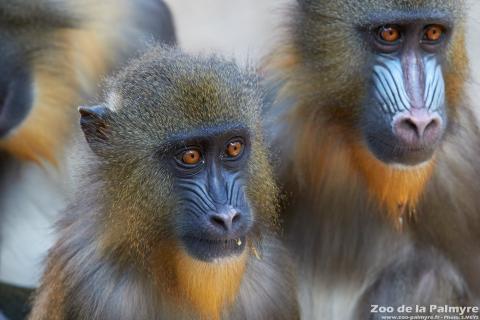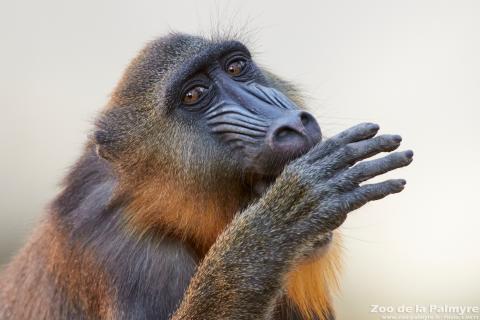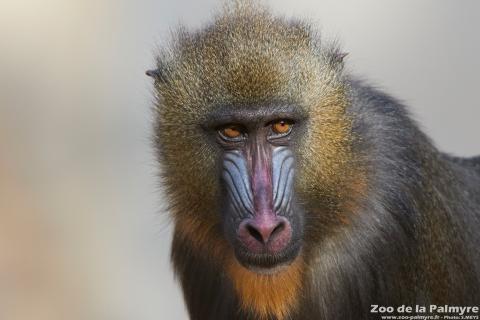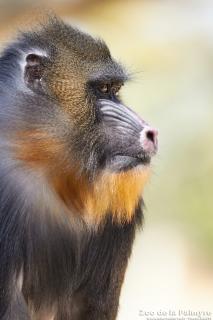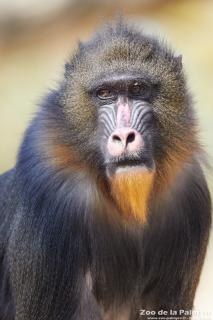Mandrill

Mandrill

-
Class
Mammalia -
Order
Primates -
Familly
Cercopithecidae
-
 ♂ 0.62–1.1m, ♀ 55–67cm
♂ 0.62–1.1m, ♀ 55–67cm -
 ♂ 18–33kg, ♀ 11–13kg
♂ 18–33kg, ♀ 11–13kg -
 6 months
6 months -
 1
1 -
 25–35 years
25–35 years
-
Diet
omnivorous (fruit, leaves, mushrooms, insects, amphibians, lizards, small mammals) -
Habitat
tropical forest -
Range
western Africa (Cameroon, Gabon, Guinea, Congo) -
 This species is part of a European Breeding Program
This species is part of a European Breeding Program
-
Population in the wild
En diminution -
IUCN REDLIST status

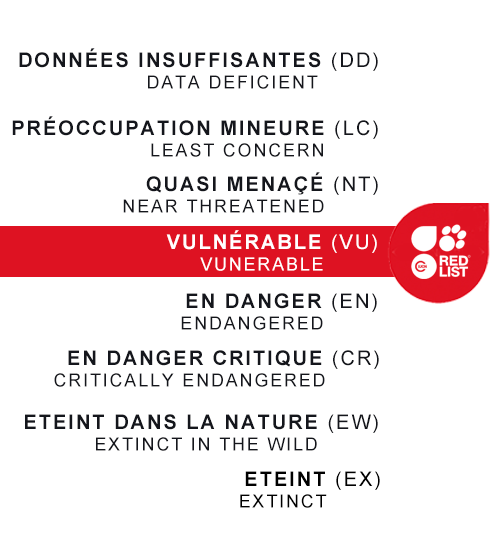
This species has a pronounced sexual dimorphism. Males are almost twice as large as females and have impressive upper canines that can measure more than 6cm, which they bare to threaten rivals or predators. Their faces and hindquarters are vividly coloured; the higher the individual ranks in the hierarchy, the brighter the colouring.
In the wild, Mandrills live in large groups of 30–49, but they can also form ‘troupes’ of up to 600! Group hierarchy is strict: the dominant male has exclusive mating rights with the female from his harem. Confrontations with other males challenging this can be violent.
Mandrills mainly eat at ground level and the lowest levels of the tropical forest but spend the night in the trees, out of reach of predators.
In the last few years, Mandrill numbers have plummeted. This is partly due to the destruction of their habitat but mainly to being hunted for their meat. Unfortunately, they are easy to find in the forest because of their constant grunting and noisy cries.

